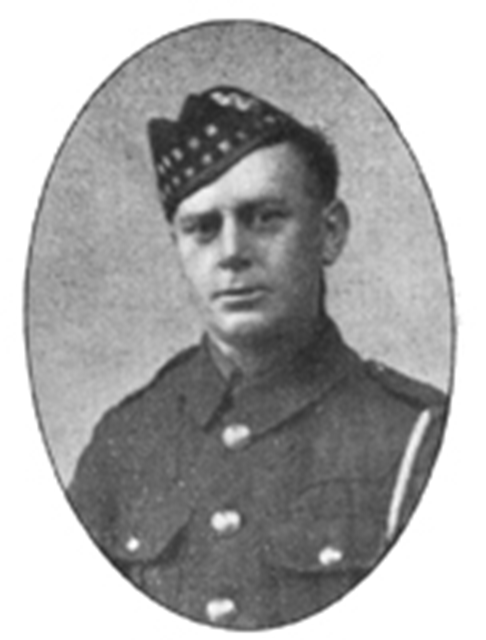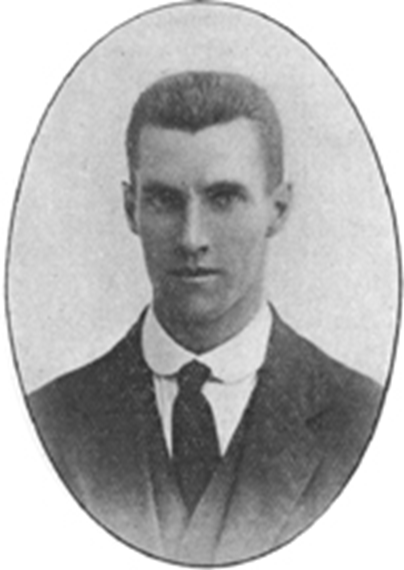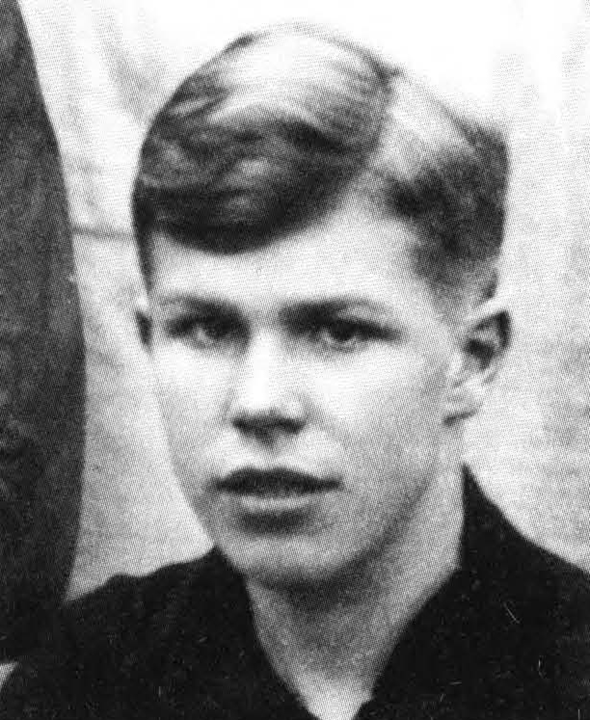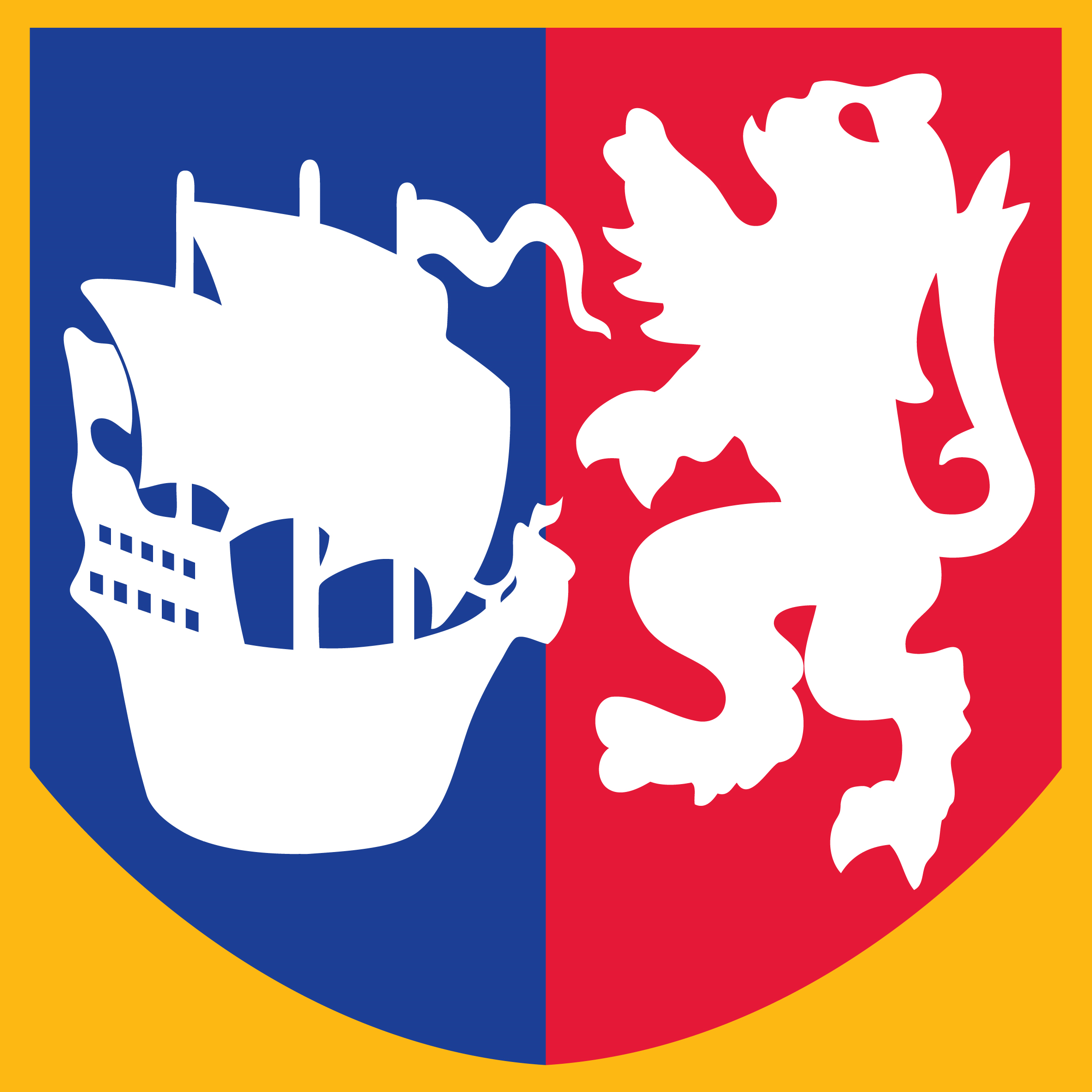The following was presented at the Stewart’s Melville College Remembrance Service in November 2022.

Every November, we gather here to remember our fallen- we acknowledge our freedom by reflecting on the terrible price paid for it in two world wars by people we never met. And every November, we gather at the memorial in front of Old College.

But why? It’s rather odd isn’t it- because no-one is buried there. None of our lads who fell in the First World War ever set eyes on it- it was only unveiled in 1922.
More prosaically, we imagine that some sort of exchange took place- one of our living lads swapped for a dead one under a headstone in some ‘foreign field’. We assume that we could, should we care to, go and visit that grave. But that simply doesn’t obtain- it just isn’t the case. Nearly half of our lads from both world wars are, well- nowhere. For some, their graves were destroyed in subsequent fighting; for others they were killed behind enemy lines, or they were bodily obliterated by the sheer violence of the industrial slaughter of twentieth century conflict.
Others, like Archie Todd of Stewart’s, who was sent on an anti-submarine patrol in August 1943 simply disappeared. To this day, nobody has any idea what fate befell him or his Sunderland aircraft- he just… vanished.

So, what to do with these men, who are simply- missing? How do we remember them? After the war, the name of every lost serviceman was inscribed on a memorial, it having been decided that they should each be remembered on a permanent monument. The most famous is the Menin Gate in the town of Ypres in Belgium, which the war poet Siegfied Sassoon reviled as being engraved with 54,000 ‘intolerably nameless names’. One of those names is James White of Melville College, who in 1915, saved the lives of eight men under incessant artillery fire by digging them out of a collapsed trench with his bare hands.

Sassoon hadn’t met John Hannah from Daniel Stewart’s, a veteran of the Boer War who journeyed from Canada to fight. So, to remember our missing, to appreciate their sacrifice, they must be more than just names to us. We must know them as men and we start that journey to understanding in our archives here at school, which is a like a beach on which other people’s memories are washed up. If we take the time to care, just to be bothered, we realise that our missing lads are quietly still all around us, preserved like fingerprints in paint. We in turn apprehend then that it is impossible to die if we live on in the memories of those that remember us.

It is the evening of the 31st of October 1914- Halloween. Britain is a few hours away from losing the First World War. Since the conflict began just bare weeks before, our tiny professional army has been shot to pieces, and now the Germans are attacking en masse. The situation is desperate- the enemy is five miles away from the strategic town of Ypres. If it falls, our army will be cut off from supplies and surrounded. The situation is beyond desperate.

Everything we have is being hurled at the line of higher ground between the hamlets of Messines and Wytshaete in a last-ditch defence. In Inferno Wood, directly in the path of the advancing German hordes, the kilted men of the London Scottish are lying on the wet Autumn ground because they are simply too exhausted to stand. Amongst them is 26-year-old Wattie Black, a pharmacist from Edinburgh.

He is recording his thoughts in a small pocket diary- fully expecting that this will probably be his last day on earth. He knows that if the worst comes to the worst, his scribbled thoughts and feelings are all that will survive him- all he will be remembered by. His words might outlive his death- and that gives him some small comfort. What day is it, anyway? Yes, a Saturday- was meant to be a match day, today. In another world, another life, he was a forward in the first team of the famous London Saracens- and Wattie, known as ‘the lump o’ beef’ had been instrumental in the side’s nine wins of the season. He had honed his game at Inverleith and had trained many times in the gym at Daniel Stewart’s College- the gym that is now this assembly hall. Let that sink in for a moment- Lance Corporal Wattie Black has stood where we are now. He has walked through that door there (gesture to old front doors ahead). He joined up on the first day of the war and then, after just three weeks of very basic training, was deployed to France- amongst the first thousand men of the eventual millions who will volunteer to fight.

His day has been nightmarish. Hustled south in a forced march along the hard paved roads of the Belgian countryside, some of the London Scottish now hobble on with feet wrapped in bloodied rags, having not yet been issued with army boots. Streaming north are thousands of refugees from the German advance, which are being deliberately and mercilessly shelled to delay the British. The straight Flemish roads are in gridlock- the battalion machine guns lost in the logjam of traffic. Logistical chaos means the Jocks have also been supplied with the wrong ammunition, which will jam their outdated rifles after a few shots. Without shovels, they are unable to dig trenches, and now the whole battalion, Wattie amongst them, has been ordered to lie down in a turnip field, under heavy artillery fire, and await the enemy.

In a lull, he scribbles in his diary “I write this under most peculiar circumstances. Shells are shrieking over our heads while rifle and maxim fire is continuous in front of us. It is simply hellish. It is the only word I can get for it… My head aches with the concussion of the earth… I feel every thud”.
At 9pm, the Germans attack in overwhelming force, advancing shoulder to shoulder with rifles at the trail, regimental bands cheering them on. The fire of the London Jocks tears the opening waves of the assault to pieces- bodies heaped three and four deep before their line. But one by one, the rifles begin to backfire. There is nothing for it- the order to fix bayonets is given, and as one man, the kilted Scots launch a desperate hand to hand attack on the enemy shock troops- half trained Scottish volunteers pitted against the pick of the German army. The Bavarians troops are good- but not good enough. Incredibly the London Scottish blunt the attack, save Ypres- and keep Britain in the war. Half of the Jocks are killed- but not Wattie.

He writes after the battle ‘I had to stop to help a fellow who was wounded in both legs and the back by shrapnel…I have been one of the lucky ones and have got through without a scratch, but it was an awful experience, while it lasted.” On Christmas Eve 1914, the adjutant of the London Scottish wraps the treasured diary in an official envelope, and with a dog tag, posts the small parcel to Wattie’s family in Bangholm Terrace, Edinburgh. 2-1-6-4 Lance Corporal Walter Cairns Black had died instantly the evening before, after being shot through the head by a sniper. Buried in a shallow grave behind the British lines, his resting place was soon obliterated by the churning artillery fire of later battles and his name is now listed on the Le Touret Memorial. But some small part of him cheated death due to his diary and his letters- his voice is clear and strong and thus he still lives today when we he speaks to us over the great gulf of eternity.
The school is now the custodian of many other mute fragments of the lives of our missing lads. Recently, a faded and crumpled Melville College cap turned up on eBay, and enfolded lovingly within it, two medals from the Second World War- unmounted, unworn.

Unusually for a piece of school uniform, (!) it was named- G.M. Fairbairn. In 1941, Garry MacKenzie Fairbairn, aged 21, found himself in the Mediterranean, flying anti-shipping strikes with 82 Squadron. Just like Wattie Black and the defence of Ypres in 1914, the defence of Malta thirty years later was no less vital to the British war effort, and no less desperate. Garry must have known that he was performing one of the most dangerous jobs of the war- attacking heavily protected enemy merchant boats in broad daylight. His chance of surviving thirty such operations? Somewhere between two and six per cent. On the 27th of May 1941, his unit took off to attack an enemy convoy out at sea. One section of twin engine Blenheim bombers would come low in the hope of drawing the fire off another flight that would bomb the convoy from above- Garry drew the short straw. He would be one of the ones attacking the ships at a height no greater than the balcony there. (Points to balcony) Sweeping into attack and under heavy anti-aircraft fire, disaster struck.

Garry, his crew and aircraft were smashed out of existence, but, terribly, not by German shells. One bomber crew had mistimed their attack and Garry was killed when his aircraft was hit by a 500-pound bomb dropped from above by one of his own friends. He is remembered with his navigator and gunner on the Malta Memorial. And missing he might have stayed- unless for that chance eBay find- a young lad’s life, all that survived him, auctioned for a paltry £75. But that cap is something magically tangible- Garry wore it, left it in the changing rooms at Ferryfield on games day, doffed it to the War Memorial at the foot of the stairs in the old school in Melville Street- and after the war, his mother wrapped his two service medals in it as her memorial. Thus, Flight Lieutenant Garry Fairbairn has come back home to us- closer now, suddenly less absent.

There are many of our boys who are now on memorials to the missing owing to grimly similar circumstances. In 1916, Stewartonian William Brown was asked to join a new, secret branch of the services that was simply and mysteriously known only as ‘Heavy Section’. He was warned the job would be incredibly dangerous- and it was- so much so, that the Tank Corps (as Heavy Section was later renamed) was known as ‘The Suicide Club’ and the early tanks dubbed ‘Tommy cookers’. After taking part in the first tank attack in history in the Battle of Flers-Courcellette in 1916, his machine sustained a direct hit from artillery fire on the 22nd of November the year after. He and his crew are honoured on the Cambrai Memorial. In a second calamitous war three decades later, Charles Graham, who would have stood outside at our memorial on Armistice Day as you will on Friday, who would have read William Brown’s name on the bronze panels there, was himself killed as an anti-tank gunner fighting German armour a few weeks after D-Day. He and the men of his gun detachment are remembered on the Bayeux Memorial.

Unlike the battlefield cemeteries that often contain men from one regiment, killed in one fight on one day, memorials to the missing often bring together soldiers and sailors who were lost in vastly different times and places. But in some cases, they reunite classmates and old friends. On the Thiepval Memorial in France, we see the name of George Russell of the Royal Scots, killed on the 1st of July 1916, the first day of the Battle of the Somme.

George was detailed to lead a party of men in the assault on the German positions in the village of Contalmaison. It was his first day in battle. That morning, 60,000 of our soldiers were killed or wounded, many being shot down in sight of their own trenches. What happened to 2nd Lieutenant Russell is unknown, as is the location of his grave- none of his platoon survived. However, we do know that George reached his objective, two miles behind enemy lines, becoming the British officer who advanced the furthest into the German positions that day, an astonishing achievement. Twenty of our FPs are on the Thiepval Memorial, many in the 16th Royal Scots like George Russell. One of his comrades was John Jolly, a librarian from Dalkeith Road, who was shot in the head clearing an enemy trench with hand grenades.

Of course, John has never really left us. He was awarded the Daniel Stewart’s Dux Prize in 1911- his name is up there on the honour boards. You’ve trooped out of that door every Monday for years and have never probably never, ever read his name. There are twenty-one of our former pupils on the Helles Memorial in Turkey, thirteen of them killed on the same day, 28th June, all of them in the Queen’s Edinburgh Rifles.

The names on the memorial, when read alphabetically, could be one of our school class registers, one of our team sheets. But far from being annihilated and scattered to the winds, on these memorials to the missing our boys are not lost, but found- back together, back amongst friends.
As much as memorials collect friends, they reunite family. The Reverend and Mrs Pryde laid a terrible price on the altar of freedom in the Second World War, losing all three of their Stewartonian sons, George, David and William, in RAF service.

Incredibly, David and George are remembered in the same place, on the Runnymede Memorial, along with eighteen other men from Stewart’s and Melville. David skippered a ‘barn door’ as the lumbering Whitley bomber was nicknamed. Twice in once week he managed to save the lives of his crew by nursing a damaged and burning aircraft back to base on one engine, making perfect forced landings both times. Awarded a Distinguished Flying Cross, he modestly recalled his exploits for an enthralled radio audience on the BBC World Service, giving hope and courage to both our service personnel and civilians trapped under Nazi occupation. George, who also won a Distinguished Flying Cross, was lost over the Mediterranean in a Blenheim bomber. Like so many men on the Runnymede Memorial, what happened to him on 21st June 1940 is unknown- it is presumed a mechanical failure caused him to crash into the sea.

So, by knowing the story behind the names, we remember the men, and we thank them for their sacrifice. But how will we be remembered? The men on our memorial lived in a world of papers, records- actual things. Their lives were handwritten- typed onto physical documents. Their photographs were printed and pasted into durable albums. Their medals were bronze and silver- and framed. What do we leave behind? None of our disposable plastic possessions are made to last. Fashion changes- much of what we have we thoughtlessly throw away when we are bored of it. We live in an internet age- if we drop our ‘phone, if we break our laptop, if our digital ‘cloud’ bursts- so disappears our past, our story, all our photos- in sum, much of what makes us, us.
Ultimately, the most important things to survive us aren’t things at all. Our good deeds, the actions we take knowing that they will positively influence others, our contributions to the community and the greater whole- these are paramount. It is said that they best way to remember someone is to emulate in your life the thing you admired most in the person who has gone- you can all, in your own way, emulate their selflessness and cheerfulness in the face of your own struggles. Whatever you do, live a life worthy of the sacrifice of our former pupils, for their example is the backbone, the very fibre of the school, its soul. And remember most of all- the lads on our memorials are not missing- they are here. Treasure them.

Beautiful words and stories. WE WILL REMEMBER THEM.
LikeLike
An interesting and moving account of those lost in the two world wars
“Lest we forget”
LikeLike
Thank You for giving us the chance to see this
LikeLike
What a wonderful touching and poignant read. Thanks to all involved in compiling this.
LikeLike
A fascinating and very emotional presentation. I too have sat in and walked through the TFC many times and at times, usually when invigilating exams, have looked at our Honours boards and wondered about some of the names from the past. The annual Remembrance Service was always such a thoughtful and respectful event and this presentation is a wonderful example. Thank you for making me “stop and remember”.
LikeLike
Significant parts of the Schools’ histories meticulously and loyally researched. Profoundly moving – and acutely humbling.
LikeLike
Ron – I do agree with your analysis of the excellent address- wish I’d been there!
(We were last together in 1950, when I left for the Army – met Doug Fairhead and Mike Gourlay in Edinburgh and Graham Cairns in Tanzania!)
Julian Lloyd,now in Montagu, Western Cape
LikeLike
A fitting tribute. Thank you.
LikeLike
I don’t like what Remembrance Day has become, but I thought this was a very thoughtful presentation, thank you for sharing it with a wider audience.
LikeLike
Excellent tributes. Having attended the 75th Anniversary on the Gallipoli Peninsula, I was fortunate enough to visit the Helles Memorial, which was very moving.
LikeLike
As an old soldier, I found this profoundly moving, especially as I have lost good friends in combat over the years. Yesterday, I marched at the Cenotaph another humbling experience.
LikeLike